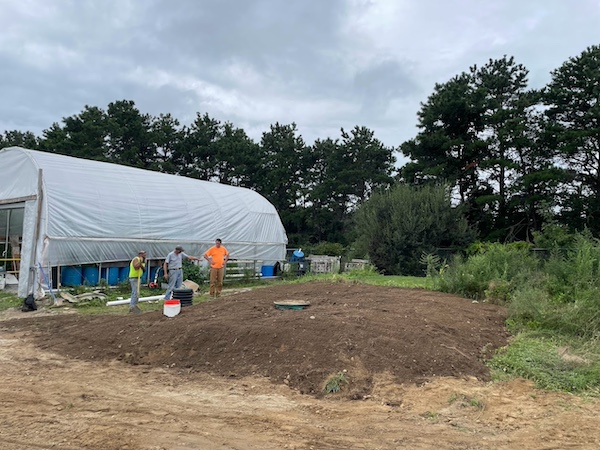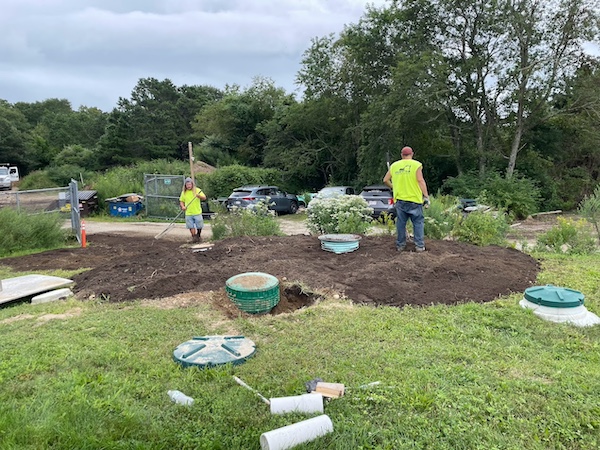
Wood-based septic systems have been identified as among the most sustainable, best performing, and efficient innovative/alternative (I/A) nitrogen removing systems. These systems are one of our main tools in reducing nitrogen pollution to impaired marine watersheds on the Cape.
These systems come with a high installation price, but because they are capable of a higher level of treatment than a conventional septic system, MassDEP currently allows homeowners who install any I/A system to reduce the soil treatment area by up to 50%.
Even with this reduction, it can be a challenge to fit an I/A system and a soil treatment area in many yards. To overcome the concerns of cost and space, the current project we are working on at MASSTC asks if it is protective of environmental and human health to size down the soil treatment by more than 50% in these top performing nitrogen removing systems.
This project, referred to onsite at MASSTC as “The Pits Project”, is funded by a DEP 319 grant and began in the summer of 2023 with the installation of three small soil treatment areas, proceeded by three different technologies onsite at MASSTC. The technologies included are the NitROE, a saturated Layercake design, and a woodchip bioreactor. The latter two technologies are non-proprietary technologies developed at MASSTC and show consistent nitrogen removal for approximately a decade.
The “pits” are all composed of a single 500-gallon leaching galley surrounded by washed stone and installation sand; typically, a system contains two to four of these structures. We are collecting monthly samples from the systems and their associated “pits” and analyzing them for pathogens (viruses and bacteria) and some contaminants of emerging concern, such as selected pharmaceuticals and personal care products. Currently, we have completed four rounds of monthly sample collection.

This proposal identifies and addresses two major impediments to more widespread use of these “pits” in these scenarios. By investigating the added efficacy of these system to better address the public health concern of pathogenic bacteria and virus treatment and the added major public health/environmental issue of Contaminants of Emerging Concern this proposal seeks to quantify the treatment benefits so that more economical means of effluent disposal can be considered.
Since these investigations can lead to smaller, more efficient disposal means, they could provide a valuable tool to address the nutrient loading issues in our marine environment.
While it is too soon to know what and if these “Pits” will have a place in the nitrogen reduction goals of the Commonwealth, this project is serving as the first investigation into the practical application
Why “pits”? The proposed soil treatment areas harken back to the pre-1995 Title Five MassDEP code, which allowed for “leachpits” (i.e. cesspools) to be used as final dispersal. While we don’t want to go in back in time to the days of dumping untreated waste into a small pit, we are fans of history and can’t ditch the word “pits,” though in this case the pit is receiving highly treated water.
